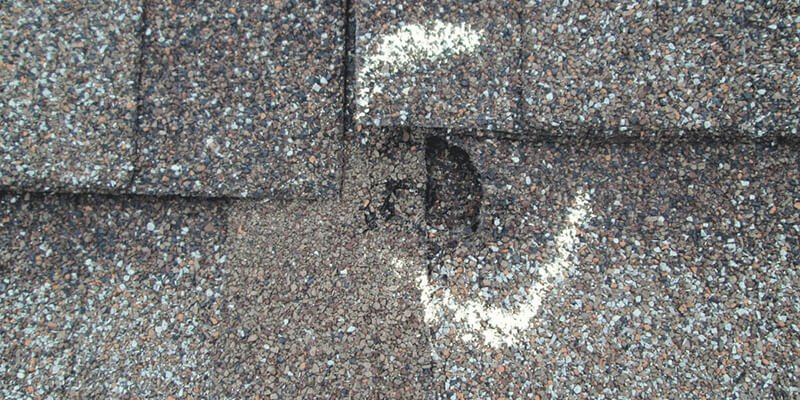When it comes to roofing issues, understanding the difference between hail damage and blistering is crucial for maintaining the longevity and functionality of your roof. Each condition affects your roof differently and requires specific approaches for repair and prevention.
What is Hail Damage?
Hail damage occurs when ice balls fall from the sky during a storm, striking your roof with significant force. This can lead to visible dents, broken or cracked shingles, and even compromise the roof’s overall structure.
Key Indicators of Hail Damage:
- Visible dents on shingles
- Cracked or broken tiles
- Granules from shingles accumulating in gutters
What is Blistering?
Blistering on roofing shingles manifests as small, bubble-like protrusions on their surface. This issue primarily arises due to inadequate ventilation, high temperatures, or moisture becoming trapped beneath the shingles.
These conditions cause the trapped gases to expand, pushing the shingle material outward and forming blisters. Identifying blistering early is crucial for maintaining roof integrity.
Signs of Blistering Include:
- Raised Bumps: These bumps are the most visible sign, indicating areas where the shingles have begun to protrude.
- Peeling or Breaking: Over time, the blisters may break open, leading to peeling or breaking of the shingle surface, which compromises the roof’s protective capability.
- Loss of Granules: Blistering often causes the protective granules on the shingles to dislodge and accumulate in gutters, signaling that the roof may need attention.
Comparing the Impact
| Issue | Hail Damage | Blistering |
| Appearance | Dents and cracks | Bumps and peeling |
| Causes | Ice balls hitting the roof | Poor ventilation, heat, moisture |
| Effects | May lead to leaks and structural damage | Mainly cosmetic, but can worsen over time |
| Prevention | Impact-resistant shingles | Improve ventilation, check attic moisture |
Prevention and Care
To prevent hail damage and blistering, consider the following tips:
- Inspect your roof regularly: Look for early signs of trouble after every season change or major storm.
- Ensure proper attic ventilation: This can significantly reduce the risk of blistering by allowing heat and moisture to escape.
- Choose the right materials: Consider investing in impact-resistant shingles if you live in a hail-prone area.
When to Seek Professional Help
It is strongly recommended to seek professional advice if you observe any indications of hail damage or blistering on your roof. Prompt action can significantly mitigate the expenses associated with extensive repairs. As roofing issues can escalate quickly, addressing them early is essential to maintain your home’s integrity and value.
Superior Roofing San Antonio: Your Trusted Partner
At Superior Roofing San Antonio, we are dedicated to identifying and rectifying hail damage and blistering on roofs. Our team comprises seasoned professionals who bring extensive expertise and commitment to every project. We understand the challenges that roof damage poses to homeowners and are equipped to provide solutions that ensure your roof remains in optimal condition.
By choosing Superior Roofing San Antonio, you gain a partner committed to protecting your home and enhancing its worth through superior roofing services. We offer a comprehensive range of services tailored to address specific roofing issues effectively. For peace of mind and expert care, contact us today for a free consultation. Our team is ready to assist you with top-notch roofing solutions right here in San Antonio, TX.
FAQs
What causes roof blistering?
Roof blistering often occurs due to inadequate attic ventilation, allowing heat and moisture to accumulate beneath the shingles. This trapped moisture and heat cause the shingle material to expand, forming blisters over time.
How can I tell if my roof has hail damage?
You can identify hail damage by roof inspection for visible signs such as dented shingles, cracked tiles, or the presence of granules from the shingles in your gutters. If you notice any of these signs, it’s advisable to seek professional assistance promptly.
Is blistering on my roof a serious issue?
While roof blistering is primarily a cosmetic concern, it can lead to more significant problems if left unaddressed. Over time, blistering may result in the deterioration of shingle integrity, potentially leading to leaks and further damage to your roof. Therefore, it’s essential to monitor and address blistering to maintain the health and longevity of your roof.


